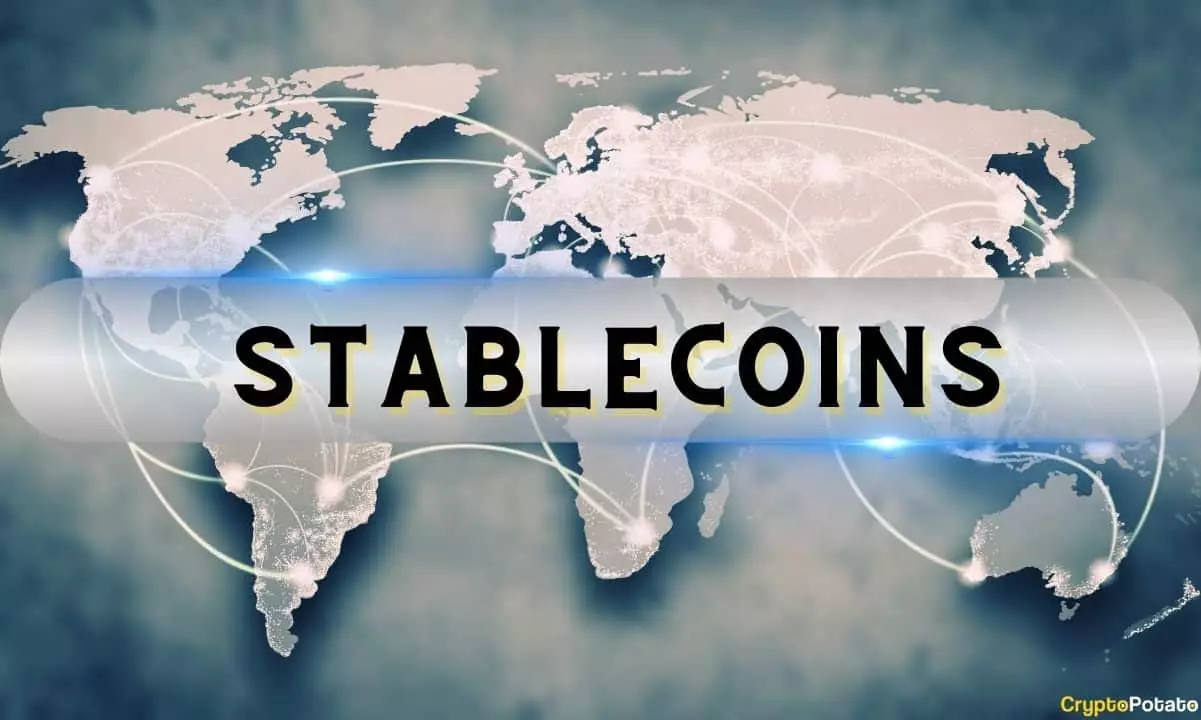In the tumultuous and rapidly evolving world of stablecoins, a stark disparity has emerged between fiat-backed and commodity-backed tokens. While the fiat-backed segment has demonstrated remarkable growth—swelling by over 76% from 2024 to 2025 with USDT and USDC dominating the landscape—commodity-backed assets are experiencing a mediocre rise, predominantly tied to fluctuations in gold prices. Despite the allure of safety traditionally associated with commodities, the reality is that fiat-backed tokens are capturing the majority of market sentiment, leading to a consolidated position that commodity options can scarcely compete with.
This concentration, however, is not merely a commentary on market dynamics; it reflects a deeper trend within the financial ecosystem. USDT and USDC are not just popular—they are dominant. They comprise an astounding 93.5% of the circulating supply, clearly showcasing that while new alternatives emerge, none can truly challenge the incumbents. The meager performance of commodity-backed tokens, amounting to just 0.8% of the total value of fiat-backed instruments, raises questions about their long-term viability and relevance in an increasingly digital-first economy.
The Struggle of Traditional Finance Institutions
Despite the significant backing of traditional finance institutions, such as PayPal and Société Générale, their stablecoin offerings have proven to be woefully inadequate in gaining traction. The likes of PYUSD and EURCV may come equipped with regulatory alignment and established brand names, yet they remain overshadowed by the innovation and adaptability of crypto-native stablecoins. The stark reality is that TradFi players are persistently failing to resonate with a user base eager for decentralized solutions that offer efficiency and flexibility.
This technological incongruity poses substantial questions about the ability of established financial institutions to adapt in an era when decentralized finance has made significant strides. Their reluctance—or inability—to embrace the rapid pace of change underscores a bleak portrayal of the future of finance; if they continue on this path, they risk becoming relics of a bygone era, unable to leverage their experience and resources to maintain relevance. The user experience offered by established players pales in comparison to the fluidity and accessibility championed by their crypto counterparts.
The Rise of Tokenized Treasuries
As we reflect on the astounding growth seen within the tokenized treasury market, a key question arises: why is this particular asset class thriving while others languish? With market caps soaring to an impressive $5.6 billion—a staggering 544.8% increase—tokenized treasuries are emerging as an unsuspecting darling within the tapestry of real-world assets. The conduit for this rise appears to be the recent upheaval in the economic landscape, highlighted by the roll-out of sweeping trade tariffs that saw a flight to safer assets.
The launch of BlackRock’s BUIDL token exemplifies how calculated moves can lead to explosive market reactions. Despite the complexities often associated with navigating traditional markets, digital assets are finding innovative footholds, unearthing opportunities for savvy investors. This is not merely a trend; it’s symptomatic of a broader reorientation towards digital, decentralized solutions that promise security and efficiency in an increasingly volatile world.
Investor Behavior: Preferences and Prediction
In the realm of investment, the psychology of behavior often dictates trends. The rise of tokenized treasuries can be attributed to an intuitive response from investors seeking predictability in unpredictable times. Yet, even amidst this growth, participation remains notably narrow, with around 11,000 individual on-chain addresses involved. This limited engagement suggests that, while the technology may hold promise, it is critically dependent on education and outreach to widen its appeal.
Moreover, this underwhelming user participation raises another dilemma—investors are often hesitant to fully engage with a space they perceive as complicated. As stablecoin markets evolve, it will be paramount for industry leaders to emphasize simplifying mechanisms for onboarding new users and fostering a sense of trust. The future of stablecoins may hinge less on technical specifications and more on the narratives and experiences that surround them, as potential participants weigh the benefits of joining against the perceived risks.
In this battle where traditional finance grapples to keep pace, decentralized assets are laying the groundwork for a financial renaissance. For the advocates of center-right wing liberalism, the promise of innovation, market freedom, and consumer choice remains paramount as we tread further into uncharted economic waters. Thus, the questions are not merely about numbers; they go deeper into how we conceptualize value, trust, and the very architecture of our financial systems.

